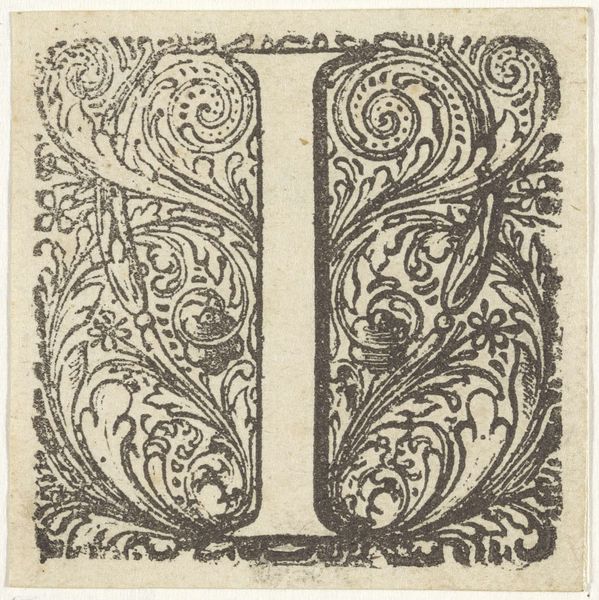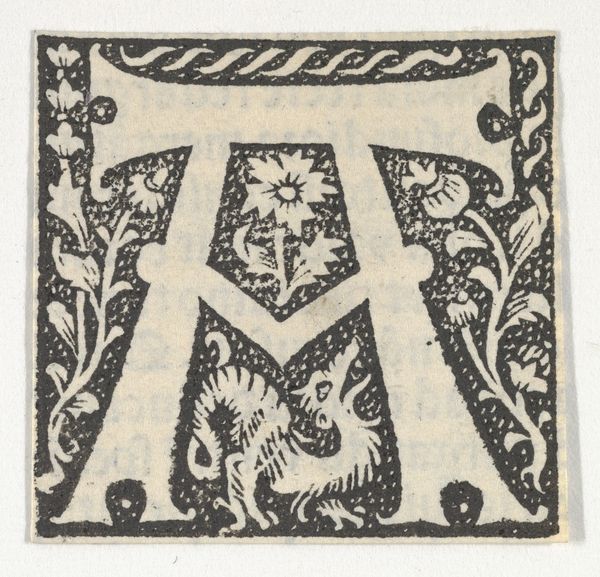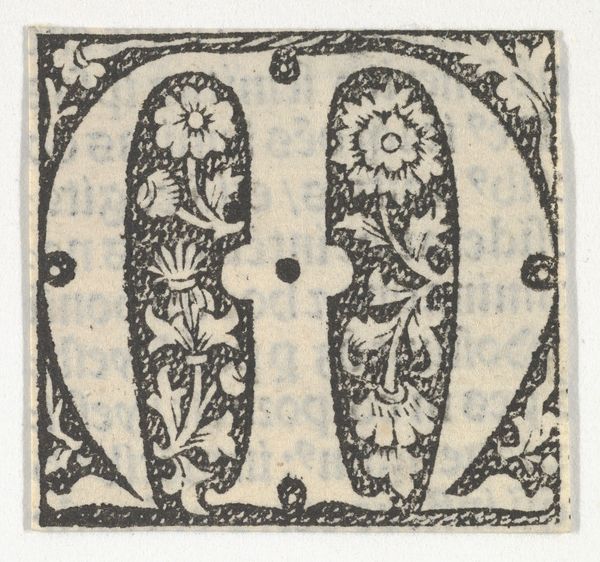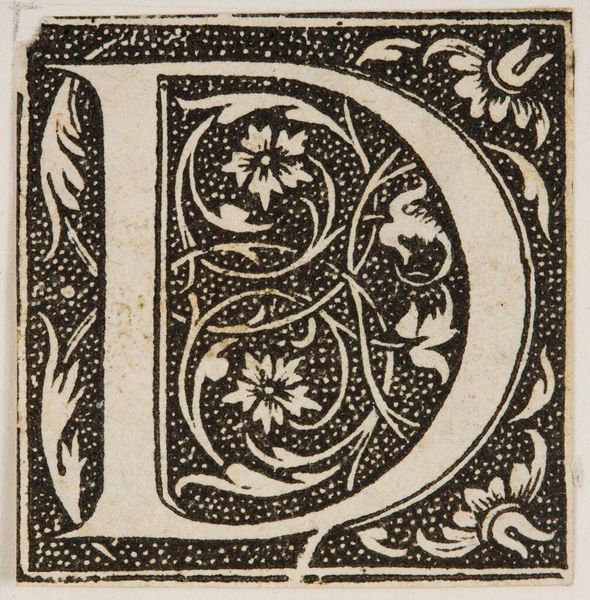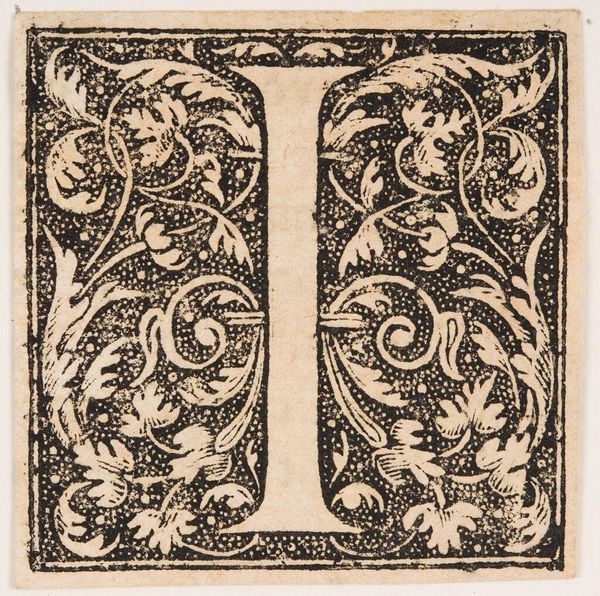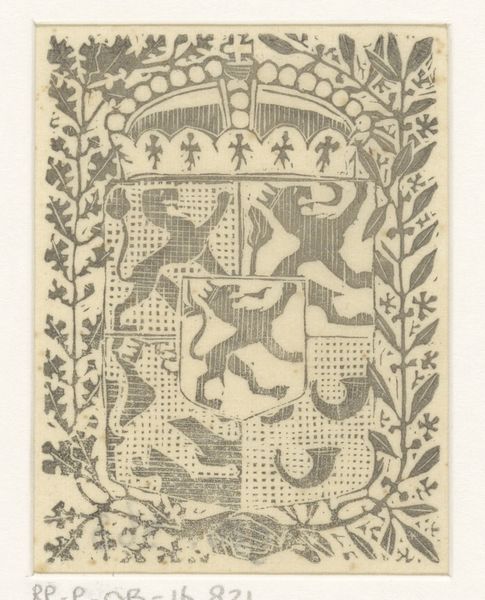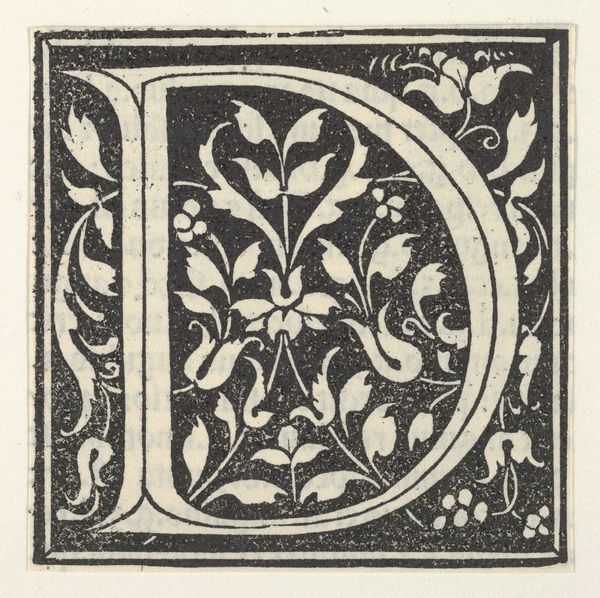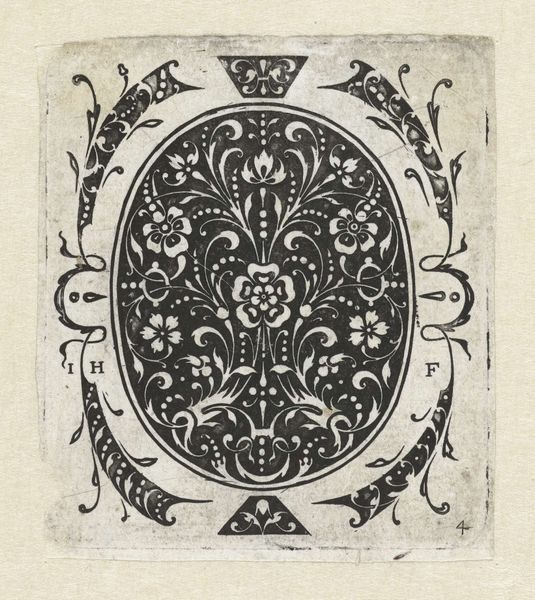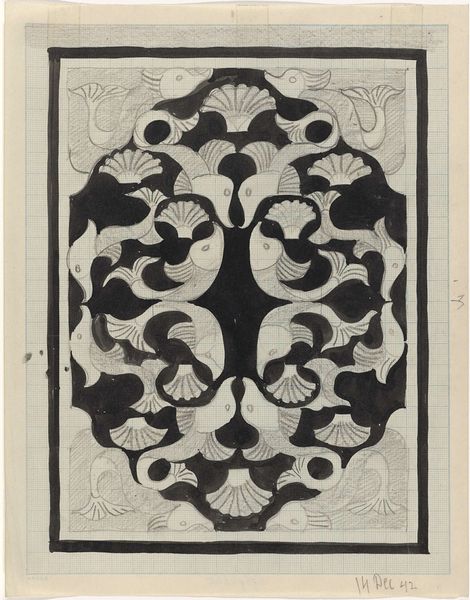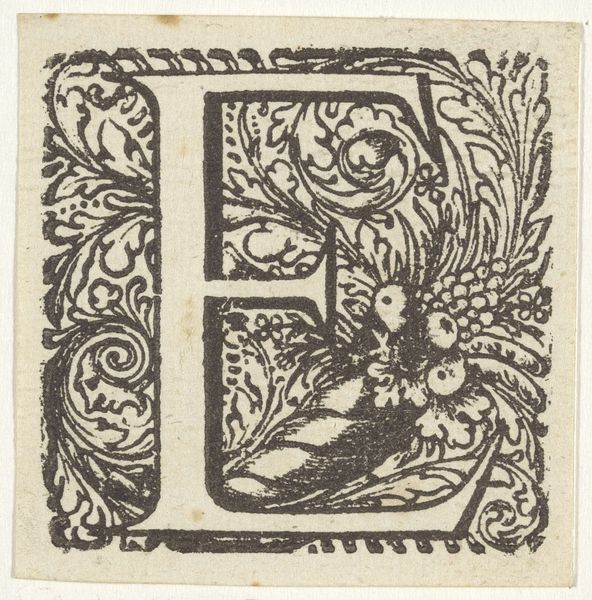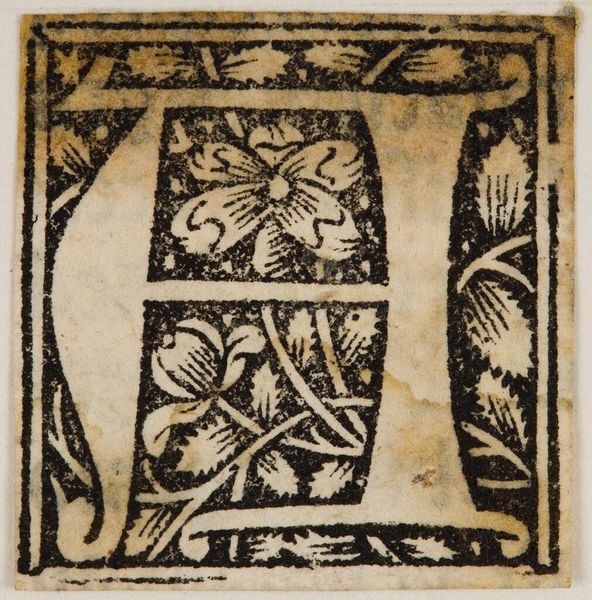
drawing, graphic-art, print, typography, woodcut
#
drawing
#
graphic-art
#
pen drawing
#
animal
# print
#
woodcut effect
#
flower
#
typography
#
woodcut
#
northern-renaissance
Dimensions: Sheet: 1 5/16 × 1 7/16 in. (3.4 × 3.7 cm)
Copyright: Public Domain
Editor: This is an initial, a decorated "M" from a Roman alphabet series, created around 1485-1499. It’s a woodcut, and there's a kind of raw energy to the image, with its stark contrasts. What can you tell me about this piece? Curator: Looking at this “M,” I see it as a product deeply embedded in its social and historical context. We have the initial itself, which points to the power of literacy and the emerging print culture. What do you think the choice of ornamentation reveals about the status of literacy at the time? Editor: Hmm, maybe literacy was becoming something associated with status, or worthy of celebrating? Curator: Exactly! And beyond the initial itself, notice the animal nestled within. Consider the historical power dynamics at play – who controlled the narratives, the means of production, and ultimately, access to knowledge? Also, how do the flora intertwined around the letter play into the gendered aspects? Editor: Interesting, the flowers could be linked to femininity and ideas about decorative arts versus "high" art? Curator: Precisely. And think about who was typically excluded from literacy and artistic creation during this period. How does that exclusion resonate even within the seemingly innocuous decoration of this single letter? Do you see any potential challenges to that power dynamic embedded here? Editor: Maybe the very act of printing these widely available alphabets, in a way democratizes letters by reproducing them? Curator: A sharp observation! These letters, accessible now, can enable many more stories and perspectives. Each of these aspects gives this one initial a richer identity that challenges historical cultural norms. Editor: This gives me a lot to think about! Looking closely, I appreciate how the details and background bring additional cultural context to what at first appeared to be just an initial in a textbook. Curator: Exactly, it is a reminder to critically examine even the smallest details, so we can uncover the hidden stories that shape our understanding of the past and present.
Comments
No comments
Be the first to comment and join the conversation on the ultimate creative platform.
